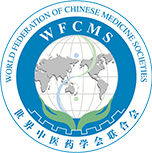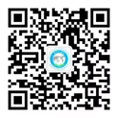Application of the data mining algorithm in the clinical guide medical records
Release time: Sept 19,2022
Reading volume: 887
Abstract:
Objective: This study analyzed the data of the medical cases in the book, “Clinical Guide Medical records” using a data mining method, to provide a reference for Ye Tianshi's academic thoughts. Methods: We used the web version of the ancient and modern medical records cloud platform to complete distribution statistics, association rules, cluster analysis, and complex network analysis of all the medical records in the “Clinical Guide Medical records.” These methods were used to summarize the baseline data and to identify the core relationship between Chinese medicine diseases and Chinese medicine, as well as the Chinese medicine Classification. Results: A total of 2572 medical records, 3136 visits, and 2879 prescriptions of 1127 traditional Chinese medicines were included in this study. The most common diseases (such as hematemesis), syndromes (such as liver–stomach disharmony), symptoms (such as rapid pulse), disease sites (such as gastric cavity), disease properties (such as Yang deficiency), treatment methods (such as activating Yang), and traditional Chinese medicines (such as Poria cocos) were identified. Furthermore, medicines with a warm, flat, cold, sweet, or bitter taste with its effects on the lungs, spleen, and heart were the most common. The observed effects of the drugs included clearing dampness, promoting diuresis, and strengthening the spleen. The association analysis showed that the associations between TCM diseases and traditional Chinese medicines that had a high confidence were “phlegm and fluid retention–Poria cocos,” “diarrhea–Poria cocos,” etc. The cluster analysis showed that traditional Chinese medicines were classified into five categories. The complex network showed the core relationship between nine high-frequency diseases and nine high-frequency traditional Chinese medicine. Conclusion: This study revealed the most important relationships between traditional Chinese medicines diseases and traditional Chinese medicines and classified the most used traditional Chinese medicines. These findings may help the coming generations of doctors to make accurate diagnoses and treat patients effectively and to improve the clinicians' efficacy in clinical diagnosis and treatment.
Keywords: ”Clinical guide medical records,” data mining, the web version of ancient and modern medical records cloud platform
Objective: This study analyzed the data of the medical cases in the book, “Clinical Guide Medical records” using a data mining method, to provide a reference for Ye Tianshi's academic thoughts. Methods: We used the web version of the ancient and modern medical records cloud platform to complete distribution statistics, association rules, cluster analysis, and complex network analysis of all the medical records in the “Clinical Guide Medical records.” These methods were used to summarize the baseline data and to identify the core relationship between Chinese medicine diseases and Chinese medicine, as well as the Chinese medicine Classification. Results: A total of 2572 medical records, 3136 visits, and 2879 prescriptions of 1127 traditional Chinese medicines were included in this study. The most common diseases (such as hematemesis), syndromes (such as liver–stomach disharmony), symptoms (such as rapid pulse), disease sites (such as gastric cavity), disease properties (such as Yang deficiency), treatment methods (such as activating Yang), and traditional Chinese medicines (such as Poria cocos) were identified. Furthermore, medicines with a warm, flat, cold, sweet, or bitter taste with its effects on the lungs, spleen, and heart were the most common. The observed effects of the drugs included clearing dampness, promoting diuresis, and strengthening the spleen. The association analysis showed that the associations between TCM diseases and traditional Chinese medicines that had a high confidence were “phlegm and fluid retention–Poria cocos,” “diarrhea–Poria cocos,” etc. The cluster analysis showed that traditional Chinese medicines were classified into five categories. The complex network showed the core relationship between nine high-frequency diseases and nine high-frequency traditional Chinese medicine. Conclusion: This study revealed the most important relationships between traditional Chinese medicines diseases and traditional Chinese medicines and classified the most used traditional Chinese medicines. These findings may help the coming generations of doctors to make accurate diagnoses and treat patients effectively and to improve the clinicians' efficacy in clinical diagnosis and treatment.
Keywords: ”Clinical guide medical records,” data mining, the web version of ancient and modern medical records cloud platform

